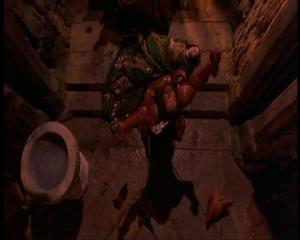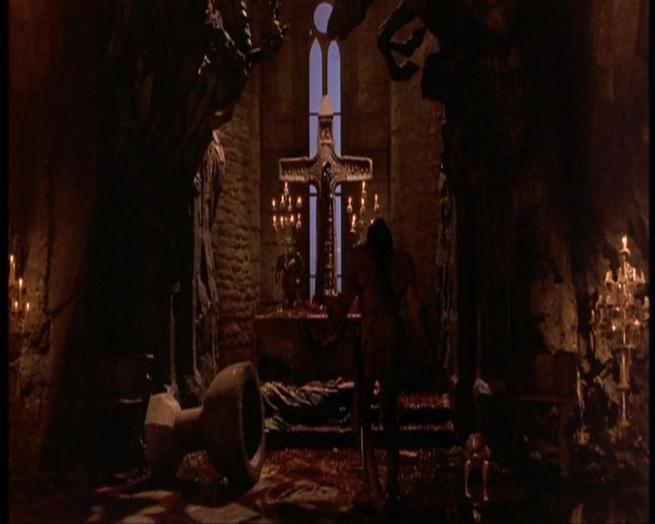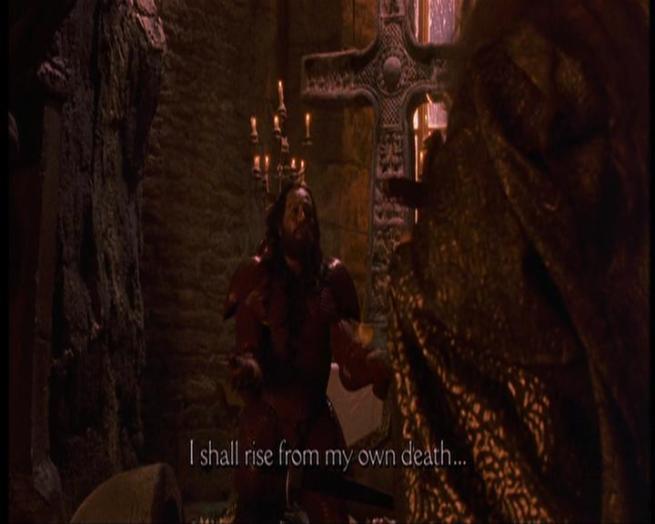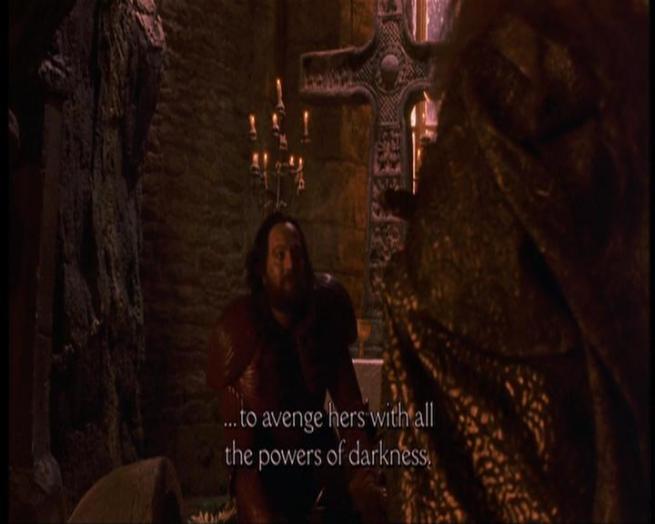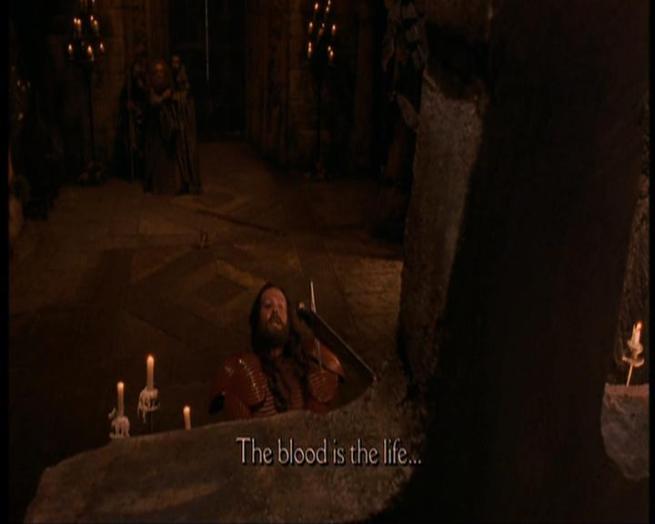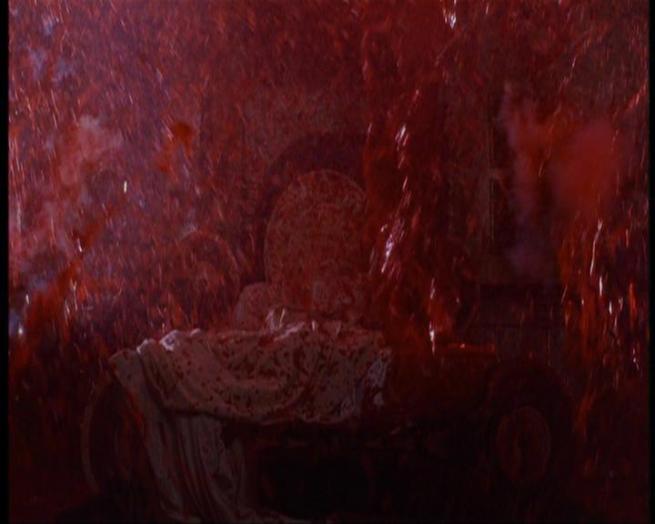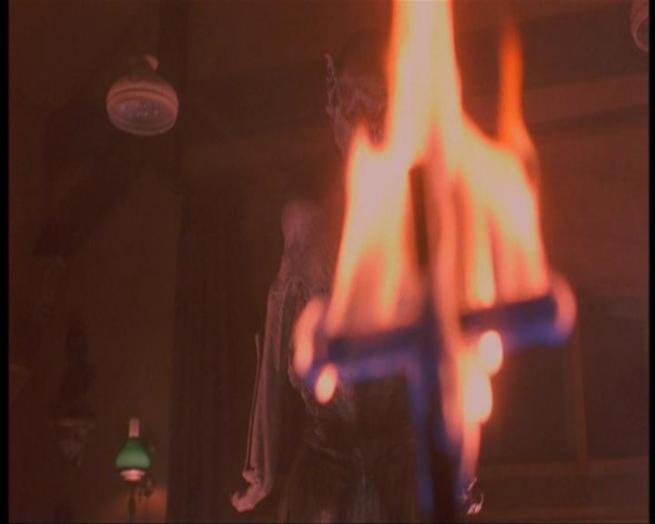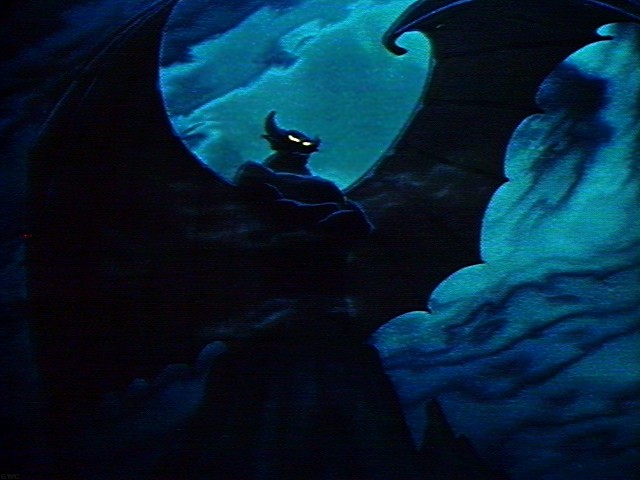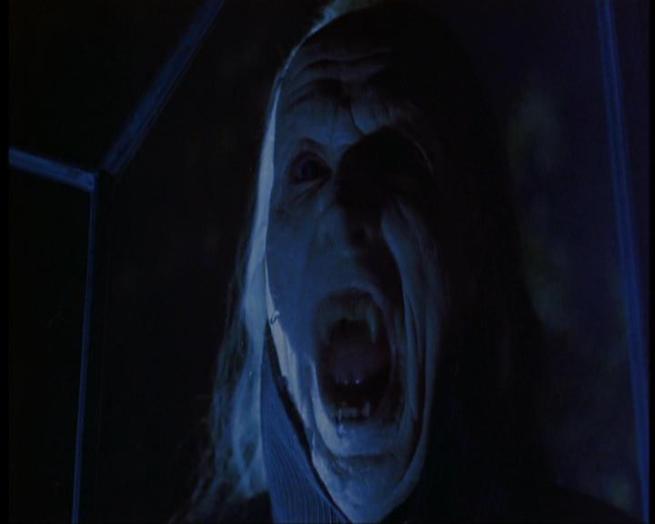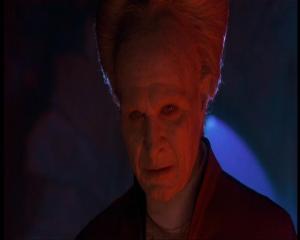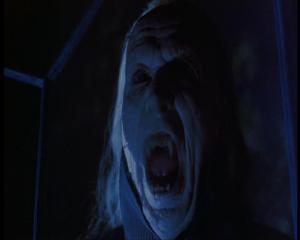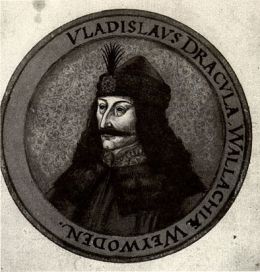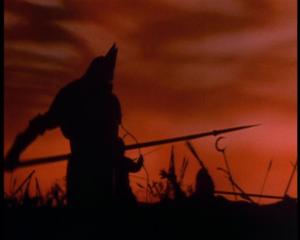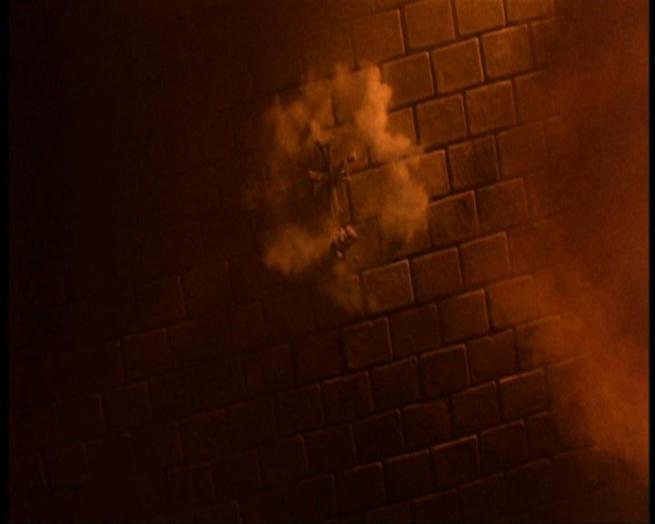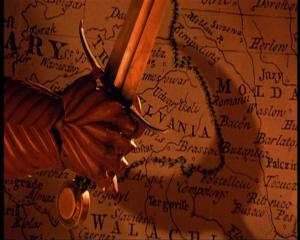Now let us turn to the fascinating and legendary aspect of history: 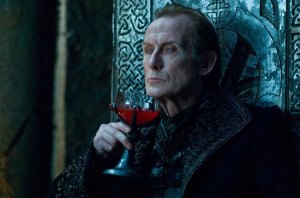 the legends tell us that Vlad III was not an ordinary mortal, but in fact he belonged to one of the most famous and legendary creatures of the night: the vampires.
the legends tell us that Vlad III was not an ordinary mortal, but in fact he belonged to one of the most famous and legendary creatures of the night: the vampires.
Everyone knows that the vampires are legendary beings, attested in the mythologies of all the earth; nocturnal and immortal creatures who feed on human blood.
And Draculea is undoubtedly the most famous and celebrated of all his “race”: there are numerous books, movies, comics and even games (RPGs, card games, video games, etc.) about him. The works about Dracula are so many that it would be really impossible to list and quote them all. His fame has reached truly a global and widespread renown.
http://www.imdb.it/character/ch0002561/
In one of the many movies about Dracula, “Blade III”, he himself, awakened from his sleep by some vampires, is surprised and annoyed in seeing how much his figure is known and also marketed in the modern world.
But despite the numerous films and books about Dracula, very few are those who tell us how Vlad III, a prince who was a fierce opponent of the Ottomans, became a vampire, or rather the King of Vampires.
The movie “Bram Stoker’s Dracula” by Coppola, undoubtly the best among all the movies about Draculea, is one of the few titles that tells how the prince was transformed in the legendary creature of the night.
In the movie, after the suicide of his beloved wife Elizabetha, a death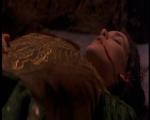 provoked by the deception of the Ottomans, Vlad III, facing the condemnation of the byzantine
provoked by the deception of the Ottomans, Vlad III, facing the condemnation of the byzantine  priests for the act of his beloved Queen, denounces god and desecrates his altar: thus he is cursed and sentenced to become a vampire, a damned soul, a son of the darkness.
priests for the act of his beloved Queen, denounces god and desecrates his altar: thus he is cursed and sentenced to become a vampire, a damned soul, a son of the darkness.
In the movie he says:
“I renounce god! I shall rise from my own death …. to avenge her with the Powers of Darkness! The blood is the life …. and it shall be mine!”
But this explanation was in reality invented for the Coppola’s movie, and in fact this event is not found anywhere in the various Dracula’s legends.
Instead, more reliable informations concerning the origin of the transformation of Vlad III into a vampire can be found in the text of B. Stoker, albeit fleetingly, vaguely and superficially.
There it is told of Arminius of the Budapesth University, a friend and collegue of Van Helsing, a man who spent his life in the study of Draculya and his family. And it was from Arminius that Van Helsing has learned much about Draculea:
“I have studied, over and over again since they came into my hands, all the papers relating to this monster, and the more I have studied, the greater seems the necessity to utterly stamp him out. All through there are signs of his advance. Not only of his power, but of his knowledge of it. As I learned from the researches of my friend Arminius of Buda-Pesth, he was in life a most wonderful man. Soldier, statesman, and alchemist. Which latter was the highest development of the science knowledge of his time. He had a mighty brain, a learning beyond compare, and a heart that knew no fear and no remorse. He dared even to attend the Scholomance, and there was no branch of knowledge of his time that he did not essay”.
But the most important reference on the mutation of Vlad III into a vampire, and hence on the origin of his powers, is present in the eighteenth chapter of the book by B. Stoker, where it is reported:
“The Draculas were, says Arminius, a great and noble race, though now and again were scions who were held by their coevals to have had dealings with the Evil One.  They learned his secrets in the Scholomance, amongst the mountains over Lake Hermanstadt, where the devil claims the tenth scholar as his due. In the records are such words as `stregoica’ witch, `ordog’ and `pokol’ Satan and Hell, and in one manuscript this very Dracula is spoken of as `vampyr,’which we all understand too well”.
They learned his secrets in the Scholomance, amongst the mountains over Lake Hermanstadt, where the devil claims the tenth scholar as his due. In the records are such words as `stregoica’ witch, `ordog’ and `pokol’ Satan and Hell, and in one manuscript this very Dracula is spoken of as `vampyr,’which we all understand too well”.
Hence, from an accurate reading of the texts, it is possible to know how Vlad III became a supernatural being. He was not the victim of a curse, nor he was bitten by another vampire: he obtained his vampire status as a result of his studies about the secrets of nature and magic in a school. An occult school, that is described to lay nestled “amongst the mountains over Lake Hermannstadt”, a school run by the Devil himself, and known as “Scholomance”.
Another current of legends regarding Drakulya testifies also the role of a woman, Tzigane, a witch, in the dark education and in the transformation of Vlad III. These legends tell that Tzigane was a young gypsy woman, a witch who became Vlad’s lover and also his teacher in occult matters.
In some legends it is told that the witches have the power to control the vampires or just certain types of vampires: and in this regard, s ome stories tell that the mother of Vlad was not the Princess Cneajna, as history teaches, but a gypsy woman who was also a witch; she was burned to death for having revealed to Vlad that she was indeed his true mother.
ome stories tell that the mother of Vlad was not the Princess Cneajna, as history teaches, but a gypsy woman who was also a witch; she was burned to death for having revealed to Vlad that she was indeed his true mother.
Tzigane teached him that Witches worship the Devil, Satan.
And it is told that it was Tzigane who guided Vlad III to the Scholomance. After leaving Scholomance and having travelled to Moldavia, they approached the ancient castle built for Satan’s King on Earth, known as Castle Draculya.
And it is there that Vlad III accepted his fate and became Draculya, the King of the Vampire, and his education and transformation was complete. 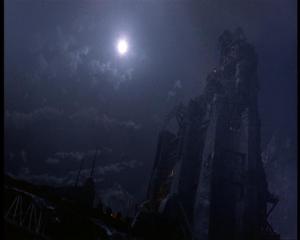 It is there that Vlad has accepted his destiny to be Satan’s Heir and has taken the dark kiss from Tzigane, and so he became a vampire.
It is there that Vlad has accepted his destiny to be Satan’s Heir and has taken the dark kiss from Tzigane, and so he became a vampire.
Very little is known of the origins of the “Scholomance’s legend”: in the text of B. Stoker, only in those two passages there is reference to this secret and occult school.  Probably Bram Stoker read about it in the works by Emily Gerard on the Transylvania and its legends: a book called “Land Beyond the Forest” (1888), and an article entitled “Transylvanian Superstitions”.
Probably Bram Stoker read about it in the works by Emily Gerard on the Transylvania and its legends: a book called “Land Beyond the Forest” (1888), and an article entitled “Transylvanian Superstitions”.
In her works, E. Gerard wrote that the Scholomance was a school where the students learnt the secrets of nature, the languages of the animals, and all the magical spells (including raising the spirits), taught by the Devil, the Master of the school:
“As I am on the subject of thunderstorms, I may as well here mention the Scholomance, or school supposed to exist somewhere in the heart of the mountains, and where all the secrets of nature, the language of animals, and all imaginable magic spells and charms are taught by the Devil in person.”
Even legends from other countries speak of the link between vampires and the practice of witchcraft:
like the russian “Upierczi”, who is said to become a vampire with witchcraft, and the “Mjertovjec” of the Little Russia, who is said to acquire the same state, behaving in life as a magician.
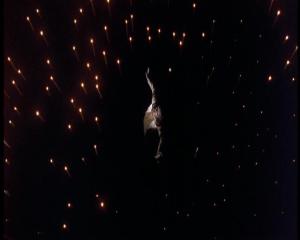 The legends say that the Scholomance would admitted ten students at a time, and that some of these would became solomonari. The apprentices were trained for nine years, overcoming obstacles and surviving ordeals. The final examination involved copying all that they knew about humanity into the Solomonar’s book. Students received their own book at the end of their training, that is described as a stone talisman with nine mysterious letters in it, with spells and rituals. Once initiated, they became alchemists and sorcerers with the power to maintain the balance of nature and with the ability to preserve order.
The legends say that the Scholomance would admitted ten students at a time, and that some of these would became solomonari. The apprentices were trained for nine years, overcoming obstacles and surviving ordeals. The final examination involved copying all that they knew about humanity into the Solomonar’s book. Students received their own book at the end of their training, that is described as a stone talisman with nine mysterious letters in it, with spells and rituals. Once initiated, they became alchemists and sorcerers with the power to maintain the balance of nature and with the ability to preserve order.
And also B. Stoker speaks about such powers: Mina Harker writes about Draculya that
“he can, within his range, direct the elements, the storm, the fog, the thunder, he can command all the meaner things, the rat, and the owl, and the bat, the moth, and the fox, and the wolf, he can grow and become small, and he can at times vanish and become unknown”.
As regards the place where this occult school was located, the various legends speak of many different places,therefore the sources do not agree on its location.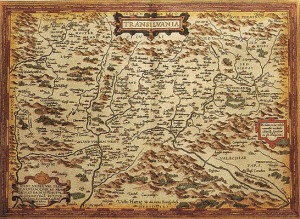
In his work, B. Stoker testifies that the Scholomance was located amongst the mountains over Lake Hermanstadt, in Transylvania.
The same place was also mentioned by E. Gerard, the possible source of B. Stoker on this subject: she refers to the fact that the Scholomance was a mythical school situated in the Carpathian Mountains and that overlooked the town of Hermanstadt, that is the Romanian city of Sibiu in Transylvania.
Other legends also add details about this occult Transilvania’s school: it was situated in the Vale of Flowers and Fog, and this valley had been formed upon the Devil’s arrival on Earth.
Other evidences instead describe environmentally the place where was situated this school, but not the precise place on Earth:
according to some legends, the “school” was in a bowl-like crater, with thick forests on the crater walls, a huge lake with a Dragon in it in the center, and caves leading to various rooms.
Others then tell that the scholomance was situated in a labyrinth of underground caves: this school remained hidden at an unknown location, variously said to be located in the mountains, in the underground, or also in the otherworld.
Concerning the origin and foundation of this secret school, the legends say that during the Dark Ages, during a crusade (according to some sources it was the first ), two knights (who in some legends are said to have been Templar Knights) have discovered mysterious secrets on alchemy and magic in the legendary and secret library of Solomon.
After the two knights came back in Europe, and they went in Wallachia, which according to some legends was also their homeland, and it is said that they mastered there the arts they had discovered.
But soon their destinies and their spiritual paths were deeply divided: one of them pursued the lore of the Kabbalah, following an art very similar to that described in the greater and lesser keys of Solomon. Instead it is said that the other knight became a devotee of the ancient Transylvania’s religion, and that he restored the contact with the ancient cult of the Dragon-Deity, that once dominated in the entire region.
In some legends this Dragon is linked to Chernebog, a mysterious Slavic Deity, a God of night, winter, and the eclipse of the sun. He is also represented in the “Night On Bald Mountain”, a sequence in Disney’s “Fantasia”; in the movie, the narrator, describing the scene, says:
” ‘A Night on Bald Mountain’ by one of Russia’s greatest composers, Modest Petrovich Musorgskij. ‘Bald Mountain’, according to tradition, is the gathering place of Satan and his followers. Here on Walpurgis Night (Walpurgisnacht), his servants gather to worship him, their master”.
The mountain of the “Night on Bald Mountain” is referred to as being Mount Triglaf, an actual mountain near Kiev in southern Russia.
According to some legends, the knight that took the path of the Cabala went then to the west, where he diffuses a tradition that grew into the so-called sect of the “Illuminati”, much related to the Cathari tradition; instead the other knight remained in Transylvania, where according to some traditions founded the Scholomance, whereas, according to others, the Scholomance, that was founded by both the knights, it has since remained in his hands and under his leadership.
Hence, from that moment, or even from its foundation, the history of the Scholomance is linked exclusively with the knight who renounced to christianity to return to the ancient religion of the Dragon.
The legends tell also that the members of this occult school, the “Solomonari”, or “Wise-ones”, were considered as the successors of Solomon. But it is important to remember that, according to ancient tales, there have been two Solomon: one was Solomon the King, whose knowledge was closely related to the teachings of the Kabbalah; the other is known as the “Black Solomon”, better known also as Asmodeus.
From various ancient tales, it is even possible to have a description of these occult sorcerer, the followers of Asmodeus: they had red eyes and red hair. 
Moreover it is said that red hair were a mark of many potential students, in the same way that red hair marked the special favor of Seth in the ancient religion of Aegypt. They weared white clothes, and when one of them arrived in a village, he presented himself as a wandering beggar. They beared a necklace, the “bag of the solomonari”, and their magical instruments, among which there was an iron axe for to create hailstones, a bridle shaped from birch, used to work together with the Dragons, and the magical book from which they read the words used to cast magic spells together with the dragons: it is told that in any given situation, the solomonari concentrated on the book, and from it they discerned what must have to be done.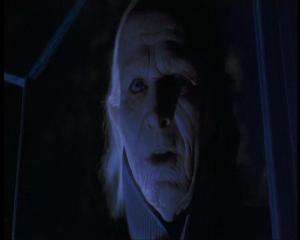
It is told that the solomonari had also the ability to affecting the weather, and they accomplished it through their power and thanks to the “Balauri”, or Dragons. By riding the Dragons in the sky the Solomonari brought rain or drought.
The ancient stories tell that upon the acquisition of the devilish insight, nine students would leaved the school as “solomonari”, and one would have been retained by the Devil as payment.
Regarding the destiny of this tenth scholar, there are different traditions.
B. Stoker says simply that at the Scholomance “the Devil claims the tenth scholar as his due”.
Instead, in her works, E. Gerard tells:
“Only ten scholars are admitted at a time, and when the course of learning has expired and nine of them are released to return to their homes, the tenth scholar is detained by the devil as payment, and mounted upon a Dragon he becomes henceforward the Devil’s aide-de-camp, and assists him in ‘making the weather,’ that is, in preparing thunderbolts”. 
Other legends tell that in this occult school, the men would have been able to make a pact with Satan to gain occult knowledges; and the headmaster, the Devil, was paid with the flesh and soul of one pupil who would become a servant of his path.
According to other legends, the tenth scholar would became the Dragon that would have guarded the school until the time in which the next class would have been convened.
The scholar C. Leatherdale linking the vague reports of B. Stoker with those of E. Gerard and other legends, says that Draculya has been undoubtedly the tenth student.
For the sources and other:
http://luthoralexander.blogspot.com/2010/04/vampire-legends-dracula-part-ii.html



